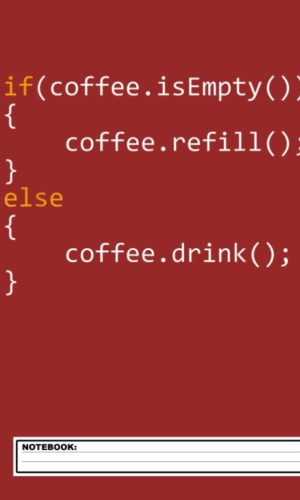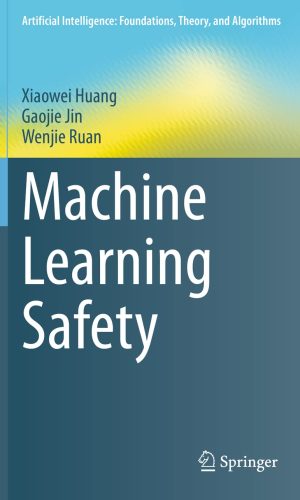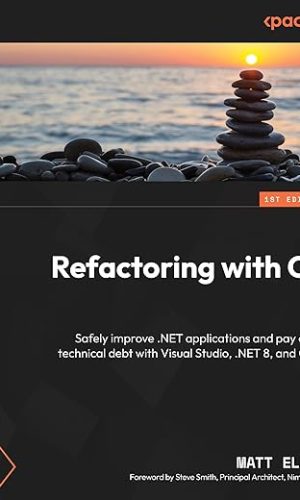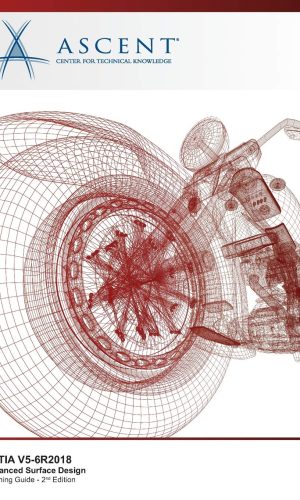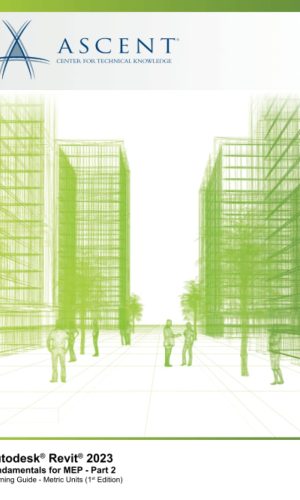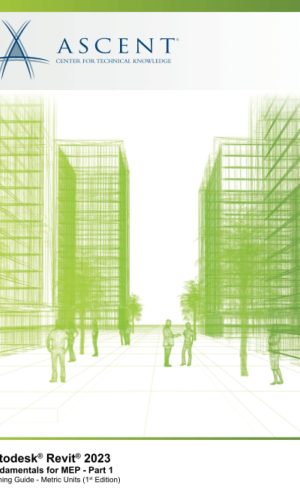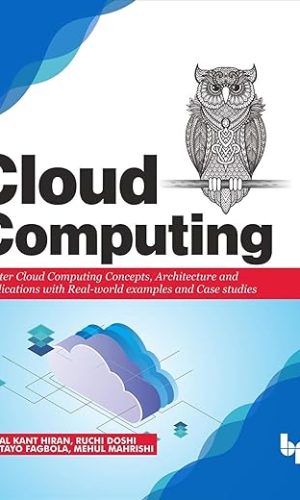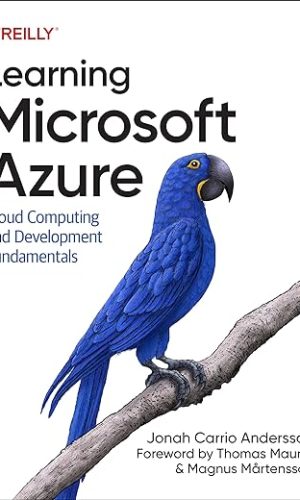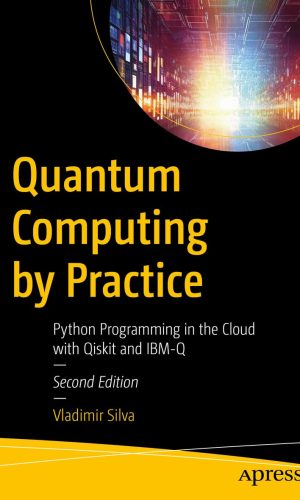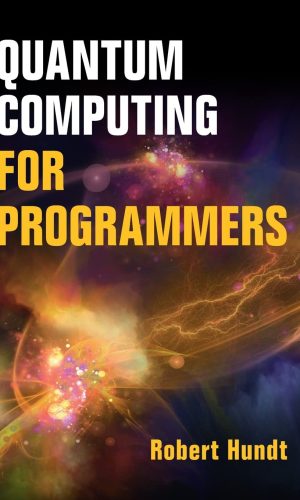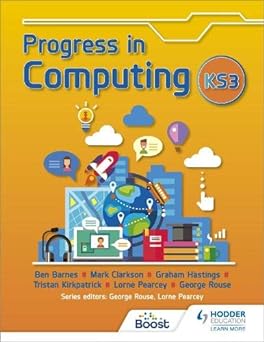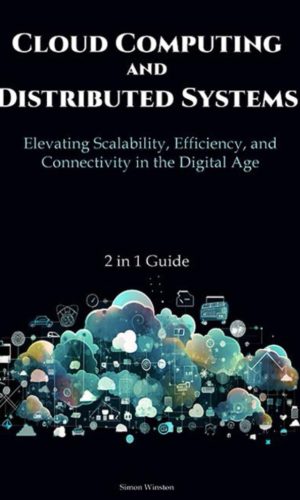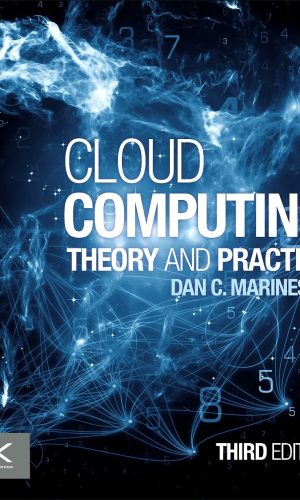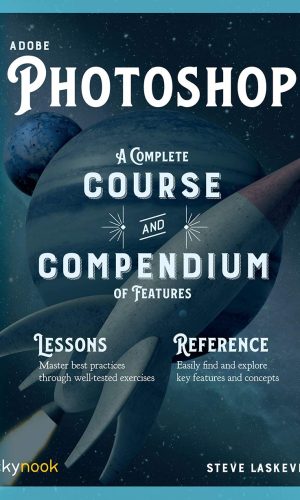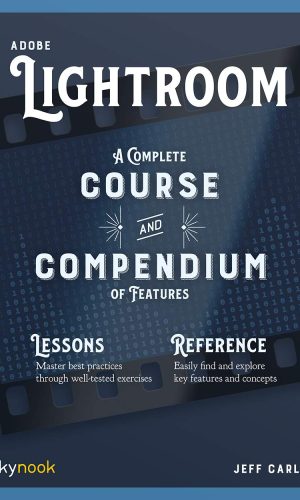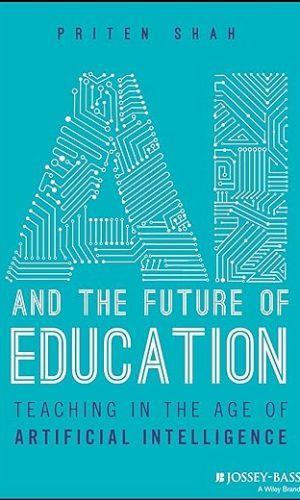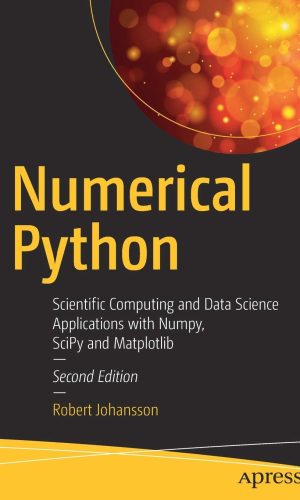-
Hacking For Dummies (For Dummies (Computer/Tech))
Learn to think like a hacker to secure your own systems and data
Your smartphone, laptop, and desktop computer are more important to your life and business than ever before. On top of making your life easier and more productive, they hold sensitive information that should remain private. Luckily for all of us, anyone can learn powerful data privacy and security techniques to keep the bad guys on the outside where they belong.
Hacking For Dummies takes you on an easy-to-follow cybersecurity voyage that will teach you the essentials of vulnerability and penetration testing so that you can find the holes in your network before the bad guys exploit them. You will learn to secure your Wi-Fi networks, lock down your latest Windows 11 installation, understand the security implications of remote work, and much more.
You’ll find out how to:
- Stay on top of the latest security weaknesses that could affect your business’s security setup
- Use freely available testing tools to “penetration test” your network’s security
- Use ongoing security checkups to continually ensure that your data is safe from hackers
Perfect for small business owners, IT and security professionals, and employees who work remotely, Hacking For Dummies is a must-have resource for anyone who wants to keep their data safe.
Read more
£20.30£21.80Hacking For Dummies (For Dummies (Computer/Tech))
£20.30£21.80 -
Funny Programmer Coffee Gift For Coders Notebook: Coding Developer Programmer Notebook Gift For Those Who Love Programming (8.5 x 11) 120 Pages
This is a great personalized unique Notebook for Coders & Programmers & Web Developers that can be used for writing poetry, jotting down your brilliant ideas, positive thoughts, recording your accomplishments, and more. Use it as a diary or gratitude journal, a travel journal or as A college Notebook. The simple lined pages allow you to use it however you wish.
Notebook journals also is a perfect gift any time of year including birthday, Christmas, friendship gifts, a journal for mothers, a journal for a Coder
to inspire someone you love today!
Paper journals never need to be charged and no batteries are required! You only need your thoughts and dreams and something to write with.
- Perfect journal notebook sized at 8.5×11
- High-quality paper is perfect for ink, gel pens, pencils or colored pencils
- 120 pages – one full year
- Mate cover for silky finish what will feel amazing in your hands!
- Perfect for gift giving!
Read more
£6.20 -
Harry Potter 2024 Calendar, Mini Wall Format Calendar, Official Product
2024 Harry Potter Mini Calendar. Each month features a character from the eight Harry Potter fantasy films from Harry Potter, Ron Weasley, and Hermione Granger to name a few. This mini calendar format is designed for smaller wall spaces but has room for all your important dates for 2024 in the date boxes provided.
Product Dimensions: 178 X 178 MM
Danilo is the leading publisher of officially licensed calendars, diaries, greeting cards, gift wrap and gift bags in the UK. We are a family run company that’s been operating for more than 40 years. Our licenses range from baby to adult. All the paper we use is responsibly sourced and we only work with suppliers and manufacturers that meet our stringent ethical requirements.
Read more
£5.70 -
Machine Learning Safety (Artificial Intelligence: Foundations, Theory, and Algorithms)
Machine learning algorithms allow computers to learn without being explicitly programmed. Their application is now spreading to highly sophisticated tasks across multiple domains, such as medical diagnostics or fully autonomous vehicles. While this development holds great potential, it also raises new safety concerns, as machine learning has many specificities that make its behaviour prediction and assessment very different from that for explicitly programmed software systems. This book addresses the main safety concerns with regard to machine learning, including its susceptibility to environmental noise and adversarial attacks. Such vulnerabilities have become a major roadblock to the deployment of machine learning in safety-critical applications. The book presents up-to-date techniques for adversarial attacks, which are used to assess the vulnerabilities of machine learning models; formal verification, which is used to determine if a trained machine learning model is free of vulnerabilities; and adversarial training, which is used to enhance the training process and reduce vulnerabilities.The book aims to improve readers’ awareness of the potential safety issues regarding machine learning models. In addition, it includes up-to-date techniques for dealing with these issues, equipping readers with not only technical knowledge but also hands-on practical skills.
Read more
£52.30£57.00 -
Autodesk Revit 2024: Fundamentals for MEP – Part 1 (Metric Units)
Note: This book is continued in Autodesk® Revit® 2024: Fundamentals for MEP – Part 2. Both books are required to complete this guide.
To take full advantage of Building Information Modeling, the Autodesk® Revit® 2024: Fundamentals for MEP guide (Part 1 and Part 2) has been designed to teach the concepts and principles of creating 3D parametric models of MEP systems from engineering design through construction documentation.
This guide is intended to introduce users to the user interface and the basic HVAC, electrical, and piping/plumbing components that make Autodesk Revit a powerful and flexible engineering modeling tool. The guide will also familiarize users with the tools required to create, document, and print the parametric model. The examples and practices are designed to take users through the basics of a full MEP project from linking in an architectural model to construction documents.
Topics Covered in Part 1
- Introduction to the Autodesk Revit software, including navigating the Revit interface.
- Starting an MEP project based on a linked architectural model and creating levels and grids as datum elements for the model.
- Understanding the project browser and working with views.
- Understanding Revit families and components.
- Working with the basic sketching and modifying tools.
- Copying and monitoring elements and coordinating linked models.
- Creating spaces so that you can analyze heating and cooling loads.
- Connecting and testing basic systems.
- Creating pipe systems with plumbing fixtures and pipes.
- Creating duct systems with air terminals, mechanical equipment, and ducts.
- Creating advanced HVAC and plumbing systems with automatic duct and piping layouts.
- Creating electrical circuits with electrical equipment, devices, and light fixtures and adding cable trays and conduits.
Prerequisites
- Access to the 2024.0 version of the software, to ensure compatibility with this guide. Future software updates that are released by Autodesk may include changes that are not reflected in this guide. The practices and files included with this guide might not be compatible with prior versions (e.g., 2023).
- This guide introduces the fundamental skills you need to learn the Autodesk Revit MEP software. It is highly recommended that users have experience and knowledge in MEP engineering and its terminology.
- It is recommended that users have a standard three-button mouse to successfully complete the practices in this guide.
Read more
£47.20 -
Autodesk Revit 2024 BIM Management: Template and Family Creation (Metric Units): 10
Building Information Modeling (BIM) is an approach to the entire building life cycle. Autodesk® Revit® is a powerful BIM program for architecture, MEP, and structure that supports the ability to coordinate, update, and share design data with team members throughout the design construction and management phases of a building’s life. A key component in managing the BIM process is to establish a company foundation for different types of projects by creating standard templates and custom family elements. Having this in place makes the process of any new project flow smoothly and efficiently.
The objective of the Autodesk® Revit® 2024 BIM Management: Template and Family Creation guide is to enable users who have worked with the software to expand their knowledge in setting up office standards with templates that include annotation styles, preset views, sheets, and schedules, as well as creating custom system, in-place, and component families.
This guide contains practices that are specific to each discipline.
Topics Covered
- Create custom templates with annotation styles, title blocks, and custom element types.
- Create schedules, including material takeoff schedules with formulas.
- Create custom wall, roof, and floor types, as well as MEP system families.
- Set up a component family file with a parametric framework.
- Create family geometry.
- Create family types.
- Modify the visibility of components and incorporate additional family items such as controls, MEP connectors, and nested components.
- Create specific families, including in-place families, profiles, annotations, and parameters.
This guide also contains discipline-specific practices for families, including doors, windows, railings, pipe fittings, light fixtures, gusset plates, and built-up columns.
Prerequisites
- Access to the 2024.0 version of the software, to ensure compatibility with this guide. Future software updates that are released by Autodesk may include changes that are not reflected in this guide. The practices and files included with this guide might not be compatible with prior versions (e.g., 2023).
- You should be comfortable with the fundamentals of the Autodesk Revit software, as found in the Autodesk Revit 2024: Fundamentals for Architecture, Autodesk Revit 2024: Fundamentals for Structure, or Autodesk Revit 2024: Fundamentals for MEP guides. Knowledge of basic techniques is assumed, such as creating standard elements, copying and moving elements, and creating and working with views. Information on Collaboration Tools, Conceptual Design, and Site Planning and Design are covered in other guides.
Read more
£62.50 -
Autodesk Civil 3D 2024: Beyond the Basics for General Civil Design (Metric Units)
The Autodesk® Civil 3D® 2024: Beyond the Basics guide is designed for civil engineers and surveyors who want to continue exploring the Autodesk Civil 3D software’s interactive, dynamic design functionality. It continues on from the topics covered in the Autodesk Civil 3D 2024: Essentials guide and covers more sophisticated techniques that extend your mastery of the software. This guide looks at configuring the software, Civil 3D’s styles and settings, alternative ways to create surfaces, and creating parcels. It also goes beyond the basics for more advanced corridor and pipe network design. Finally, it covers customizing sheet set properties, performing quantity takeoffs, and visualization.
Topics Covered
- Create a Civil 3D template drawing.
- Create and manage styles and label styles.
- Create data shortcuts.
- Create and edit parcels and print parcel reports.
- Create, edit, view, and analyze surfaces.
- Create assemblies, corridors, and roundabouts.
- Add appurtenances to pressure pipe networks.
- Customize sheet set properties.
- Perform quantity takeoff and volume calculations.
* For professionals looking to learn only the survey functionality, consider the Civil 3D Essentials for Surveyors guide.
Prerequisites
- Access to the 2024.0 version of the software, to ensure compatibility with this guide. Future software updates that are released by Autodesk may include changes that are not reflected in this guide. The practices and files included with this guide might not be compatible with prior versions (e.g., 2023).
- Knowledge of Civil 3D basics as taught in Autodesk Civil 3D: Essentials, or equivalent experience.
- Experience with AutoCAD® or AutoCAD-based products and a sound understanding and knowledge of civil engineering terminology.
Read more
£60.30 -
Refactoring with C#: Safely improve .NET applications and pay down technical debt with Visual Studio, .NET 8, and C# 12
Learn how to improve the maintainability of C# code using modern tools and techniques to resolve technical debt while working safely and efficiently with legacy code
Key Features
- Apply a wide range of refactoring techniques using the latest tools and features of C#
- Discover ways to safely improve your code using tests, Roslyn analyzers, and AI assistance
- Find ways of communicating technical debt and improving your code in agile and enterprise settings
- Purchase of the print or Kindle book includes a free PDF eBook
Book Description
Software projects start as brand-new greenfield projects, but invariably become muddied in technical debt far sooner than you’d expect. In Refactoring with C#, you’ll explore what technical debt is and how it arises before walking through the process of safely refactoring C# code using modern tooling in Visual Studio and more recent C# language features using C# 12 and .NET 8. This book will guide you through the process of refactoring safely through advanced unit testing with XUnit and libraries like Moq, Snapper, and Scientist .NET. You’ll explore maintainable code through SOLID principles and defensive coding techniques made possible in newer versions of C#. You’ll also find out how to run code analysis and write custom Roslyn analyzers to detect and resolve issues unique to your code.
The nature of coding is changing, and you’ll explore how to use AI with the GitHub Copilot Chat to refactor, test, document, and generate code before ending with a discussion about communicating technical debt to leadership and getting organizational buy-in to refactor your code in enterprise organizations and in agile teams.
By the end of this book, you’ll understand the nature of refactoring and see how you can safely, effectively, and repeatably pay down the technical debt in your application while adding value to your business.
What you will learn
- Understand technical debt, its causes and effects, and ways to prevent it
- Explore different ways of refactoring classes, methods, and lines of code
- Discover how to write effective unit tests supported by libraries such as Moq
- Understand SOLID principles and factors that lead to maintainable code
- Use AI to analyze, improve, and test code with the GitHub Copilot Chat
- Apply code analysis and custom Roslyn analyzers to ensure that code stays clean
- Communicate tech debt and code standards successfully in agile teams
Who this book is for
This book is for any developer familiar with C# who wants to improve the code they work with on a day-to-day basis. While this book will be most beneficial to new developers with only a year or two of experience, even senior engineers and engineering managers can make the most of this book by exploring not just the process of refactoring, but advanced techniques with libraries like Moq, Snapper, Scientist .NET, and writing custom Roslyn analyzers.
Table of Contents
- Technical Debt, Code Smells, and Refactoring
- Introduction to Refactoring
- Method-Level Refactorings
- Class-Level Refactorings
- Code-Level Refactorings
- Unit Testing
- Test Driven Development
- Avoiding Code Anti-Patterns with SOLID
- Advanced Unit Testing
- Defensive Coding Techniques
- AI-Assisted Refactoring with GitHub Copilot
- Code Analysis in Visual Studio
- Creating a Roslyn Analyzer
- Refactoring Code with Roslyn Analyzers
- Communicating Technical Debt
- Adopting Code Standards
- Agile Refactoring
Read more
£37.00 -
Autodesk Revit 2023: Fundamentals for Structure (Metric Units): Autodesk Authorized Publisher
To take full advantage of Building Information Modeling, the Autodesk® Revit® 2023: Fundamentals for Structure guide has been designed to teach the concepts and principles of creating 3D parametric models of structural buildings from engineering design through construction documentation.
This guide is intended to introduce you to the user interface and the basic building components of the software that makes Autodesk® Revit® a powerful and flexible structural modeling tool. The goal is to familiarize you with the tools required to create, modify, analyze, and document a parametric model. The examples and practices are designed to take you through the basics of a full structural project, from linking in an architectural model to construction documents.
Topics Covered
- Introduction to the Autodesk Revit software.
- Navigating the Revit workspace and interface.
- Working with the basic sketching and modifying tools.
- Creating levels and grids as datum elements for the model.
- Understanding Revit families and components.
- Understanding the project browser and working with views.
- Starting a structural project based on a linked architectural model.
- Creating a 3D building model.
- Adding structural columns and walls.
- Adding foundations and structural slabs.
- Structural reinforcement.
- Beams, trusses, and framing systems.
- Analytical models and placing loads.
- Project practices to reinforce learning.
- Setting up sheets for plotting with text, dimensions, details, tags, and schedules.
- Creating details.
Prerequisites
- Access to the 2023.0 version of the software, to ensure compatibility with this guide. Future software updates that are released by Autodesk may include changes that are not reflected in this guide. The practices and files included with this guide might not be compatible with prior versions (e.g., 2022).
- This guide introduces the fundamental skills in learning how to use the Autodesk Revit software, with a focus on the structural tools. It is highly recommended that students have experience and knowledge in structural engineering and its terminology.
Read more
£83.90 -
CATIA V5-6R2018: Advanced Surface Design
The CATIA V5-6R2018: Advanced Surface Design learning guide expands on the knowledge learned in the CATIA V5-6R2018: Introduction to Surface Design learning guide by covering advanced curve and surface topics found in the Generative Shape Design Workbench. Topics include: advanced curve construction, advanced swept, blend and offset surface construction, complex fillet creation, and the use of laws. Curve and surface analysis are introduced to validate the student’s geometry. Tools and methods for rebuilding geometry are also discussed. As with the CATIA V5-6R2018: Introduction to Surface Design learning guide, meeting model specifications (such as continuity settings) remains forefront in introducing tools and methodologies.
Topics Covered
- Surface Design Overview
- Advanced Wireframe Elements
- Curve Analysis and Repair
- Swept Surfaces
- Blend Surfaces
- Adaptive Sweep
- Laws
- Advanced Surface Fillets
- Alternative Filleting Methods
- Duplication Tools
- Knowledge Templates
- Surface Analysis and Repair
- Offset Surfaces
- Project Exercises
Prerequisites
- Access to the V5-6R2018 version of the software, to ensure compatibility with this guide. Future software updates that are released by Dassault Systèmes may include changes that are not reflected in this guide. The practices and files included with this guide might not be compatible with prior versions (i.e., V5-6R2017).
- Completion of the CATIA V5-6R2018: Introduction to Surface Design course is recommended.
Read more
£72.00 -
Autodesk Revit 2024: Fundamentals for Structure (Metric Units)
To take full advantage of Building Information Modeling, the Autodesk® Revit® 2024: Fundamentals for Structure guide has been designed to teach the concepts and principles of creating 3D parametric models of structural buildings from engineering design through construction documentation.
This guide is intended to introduce you to the user interface and the basic building components of the software that makes Autodesk® Revit® a powerful and flexible structural modeling tool. The goal is to familiarize you with the tools required to create, modify, analyze, and document a parametric model. The examples and practices are designed to take you through the basics of a full structural project, from linking in an architectural model to construction documents.
Topics Covered
- Introduction to the Autodesk Revit software, including navigating the Revit interface
- Starting a structural project based on a linked architectural model and creating levels and grids as datum elements for the model
- Understanding the project browser and working with views
- Understanding Revit families and components
- Working with the basic sketching and modifying tools
- Adding structural columns to a project and copying and monitoring elements from linked models
- Adding foundations and footings
- Creating structural framing, including beams, trusses, and framing systems
- Creating slabs for foundations, structural floors, and roofs
- Creating structural reinforcement, including placing rebar and adding fabric reinforcement
- Setting up sheets and placing and modifying views on sheets
- Working with dimensions, text, annotations, and legends
- Adding tags and working with schedules
- Setting up detail views and adding detail components
Prerequisites
- Access to the 2024.0 version of the software, to ensure compatibility with this guide. Future software updates that are released by Autodesk may include changes that are not reflected in this guide. The practices and files included with this guide might not be compatible with prior versions (e.g., 2023).
- This guide introduces the fundamental skills in learning how to use the Autodesk Revit software, with a focus on the structural tools. It is highly recommended that students have experience and knowledge in structural engineering and its terminology.
Read more
£82.90 -
Autodesk 3ds Max 2024: Fundamentals (Mixed Units)
The Autodesk® 3ds Max® 2024: Fundamentals guide provides a thorough introduction to the Autodesk 3ds Max 2024 software that will help new users make the most of this sophisticated application, as well as broaden the horizons of existing, self-taught users. The guide instructs you on how to effectively use the software interface and navigate through the scenes. It explores the creation of 3D objects and how to bring in objects from other software such as Autodesk Revit, AutoCAD, and Civil 3D. Additionally, it teaches you to prepare the scenes for renderings by adding materials, lights, and cameras. Finally, the guide covers an understanding of various renderers included with the software, as well as image creation and animation techniques.
The practices in this guide are primarily geared towards real-world tasks encountered by users of the Autodesk 3ds Max software in the Architecture, Interior Design, and Civil Engineering industries. Advanced topics such as character modeling, character animation, and rigging are not covered in this guide.
Topics Covered
- Autodesk 3ds Max interface and workflow
- Assembling files by importing, linking, or merging
- 3D modeling with primitives and 2D objects
- Using modifiers to create and modify 3D objects
- Materials and maps
- Autodesk 3ds Max lighting
- Working with cameras and exposure control
- Rendering using various renderers, such as Scanline, ART, and Arnold
- Animation for visualization
Prerequisites
- Access to the 2024.0 version of the software, to ensure compatibility with this guide. Future software updates that are released by Autodesk may include changes that are not reflected in this guide. The practices and files included with this guide might not be compatible with prior versions (e.g., 2023).
- Experience with 3D modeling is recommended.
Read more
£86.50 -
Autodesk Revit 2023: Fundamentals for MEP – Part 2 (Metric Units)
Note: This book is a continuation of Autodesk® Revit® 2023: Fundamentals for MEP – Part 1. Both books are required to complete this guide.
To take full advantage of Building Information Modeling, the Autodesk® Revit® 2023: Fundamentals for MEP guide has been designed to teach the concepts and principles of creating 3D parametric models of MEP systems from engineering design through construction documentation.
This guide is intended to introduce users to the user interface and the basic HVAC, electrical, and piping/plumbing components that make Autodesk Revit a powerful and flexible engineering modeling tool. The guide will also familiarize users with the tools required to create, document, and print the parametric model. The examples and practices are designed to take users through the basics of a full MEP project from linking in an architectural model to construction documents.
Topics Covered in Part 2
- Setting up sheets, and placing and modifying views on sheets.
- Working with dimensions, text, annotations, and legends.
- Adding tags and working with schedules.
- Setting up detail views and adding detail components.
Prerequisites
- Access to the 2023.0 version of the software, to ensure compatibility with this guide. Future software updates that are released by Autodesk may include changes that are not reflected in this guide. The practices and files included with this guide might not be compatible with prior versions (e.g., 2022).
- This guide introduces the fundamental skills you need to learn the Autodesk Revit MEP software. It is highly recommended that users have experience and knowledge in MEP engineering and its terminology.
- It is recommended that users have a standard three-button mouse to successfully complete the practices in this guide.
Read more
£35.90 -
Autodesk Revit 2023: Fundamentals for MEP – Part 1 (Metric Units)
Note: This book is continued in Autodesk® Revit® 2023: Fundamentals for MEP – Part 2. Both books are required to complete this guide.
To take full advantage of Building Information Modeling, the Autodesk® Revit® 2023: Fundamentals for MEP guide has been designed to teach the concepts and principles of creating 3D parametric models of MEP systems from engineering design through construction documentation.
This guide is intended to introduce users to the user interface and the basic HVAC, electrical, and piping/plumbing components that make Autodesk Revit a powerful and flexible engineering modeling tool. The guide will also familiarize users with the tools required to create, document, and print the parametric model. The examples and practices are designed to take users through the basics of a full MEP project from linking in an architectural model to construction documents.
Topics Covered in Part 1
- Introduction to the Autodesk Revit software.
- Navigating the Revit workspace and interface.
- Working with the basic sketching and modifying tools.
- Creating levels and grids as datum elements for the model.
- Understanding Revit families and components.
- Understanding the project browser and working with views.
- Starting an MEP project based on a linked architectural model.
- Creating spaces and zones so that you can analyze heating and cooling loads.
- Creating HVAC networks with air terminals, mechanical equipment, ducts, and pipes.
- Creating plumbing networks with plumbing fixtures and pipes.
- Creating electrical circuits with electrical equipment, devices, and light fixtures and adding cable trays and conduits.
- Creating HVAC and plumbing systems with automatic duct and piping layouts.
- Testing duct, piping and electrical systems.
Prerequisites
- Access to the 2023.0 version of the software, to ensure compatibility with this guide. Future software updates that are released by Autodesk may include changes that are not reflected in this guide. The practices and files included with this guide might not be compatible with prior versions (e.g., 2022).
- This guide introduces the fundamental skills you need to learn the Autodesk Revit MEP software. It is highly recommended that users have experience and knowledge in MEP engineering and its terminology.
- It is recommended that users have a standard three-button mouse to successfully complete the practices in this guide.
Read more
£49.80 -
Technical Drawing with Engineering Graphics
This full-color text offers a clear, complete introduction and detailed reference for creating 3D models and 2D documentation drawings. Building on its reputation as a trusted reference, this edition expands on the role that 3D CAD databases now play in design and documentation. Superbly integrated illustrations, text, step-by-step instructions, and navigation make it easier than ever to master key skills and knowledge. Throughout, the authors demonstrate 3D and 2D drawing skills and CAD usage in real-world work practice in today’s leading disciplines. They combine strong technical detail, real-world examples, and current standards, materials, industries, and processes-all in a format that is efficient, colorful, and visual.
Features:- Splash Spread: Appealing chapter opener provides context and motivation.
- References and Web Links: Useful weblinks and standards provided upfront in each chapter.
- Understanding Section: Foundational introductions, tabbed for easy navigation, outline each topic’s importance, use, visualization tips, and theory.
- Detail Section: Detailed, well-tested explanations of drawing techniques, variations, and examples-organized into quick-read sections, numbered for easy reference.
- CAD at Work Section: Breakout pages offer tips on generating drawings from 2D or 3D models.
- Portfolio Section: Examples of finished drawings show how techniques are applied in the real world.
- Key Words: Italicized on first reference, summarized after each chapter.
- Chapter: Summaries and Review Questions: Efficiently reinforce learning.
- Exercises: Outstanding problem sets with updated exercises, including parts, assembly drawings from CAD models, sketching problems, and orthographic projections.
Read more
£80.70 -
Technical Animation in Video Games
This book provides a comprehensive overview of video game technical animation, covering the next generation pipelines that industry developers utilise to create their games. It covers the technical animation workflow from start to finish, looking at both software and hardware, as well as the industry standard processes that all technical animators need to know.
Written to be an accessible technical animation resource, this book combines easy-to-understand principles with educational use cases on how to combine the principles and tools taught within. Example test scripts, animation files, and rig assets are provided as tangible examples that can be modified and taken apart to deepen your understanding. It covers the end-to-end pipeline of technical animation, from the very first steps of placing joints in Autodesk’s Maya to breathe life into your static characters, through tools and automation development, all the way to Unreal Engine 5 integration and optimisation.
Additional resources are available on the book’s GitHub repository. From this resource, you will find example files for Maya and Python scripts that will help with your own work and demonstrations featured throughout this book.
This book is essential reading for early-career game technical animators as well as those studying game animation courses. It will also appeal to technical animators working in the film industry.
Read more
£41.20£42.70Technical Animation in Video Games
£41.20£42.70 -
The Web before the Web: Putting the Hype into Hypertext
In the mid-1970s, the personal computer began to
completely revolutionise the world of information technology,
creating a unique opportunity for those of us in that industry to
invent a different type of computing experience.Over the next twenty years this innovative new world of personal
computing was constructed. New applications were being invented
for the first time – and were being widely welcomed.By the mid-90s, the basic applications of personal computing had
been determined, the internet and the World Wide Web had been
established, enabling what we now recognise as the environment
of modern communications and information publishing.This book describes these 20 years when today’s information
world was being invented for the first time; from the perspective
of the developers of online interactive documents, hypertext,
the technology on which the World Wide Web is based.The World Wide Web has now become the platform on
which the modern information world is built: communications,
publishing, commerce, and broadcasting are all enabled by this
revolutionary technology.The Web before the Web describes our part in pioneering hypertext,
the technology behind this phenomenon.Read more
£9.50 -
Password Book A5: With alphabetical tabs, password log book. Small Size 6×9 in. Secure & Simplify Your Digital Life: A Compact Password Organizer with … Alphabetically Indexed…
Keep Your Online Life Organized with Our Premium Password Book.
Product Features:
-
Handy Size: At 6 x 9 inches, our Password Book fits perfectly in your bag or drawer, making it your ideal companion both at home and on the go.
- Ample Space: With 105 pages of high-quality white paper, there’s plenty of room to store over 415 passwords, neatly organized for easy access.
- Alphabetical Tabs: Effortlessly navigate through your accounts with our user-friendly, scrollable alphabetical tabs — no cutouts mean a sleek profile and enhanced durability.
- Secure and Private: A discreet black cover with minimalist design ensures your sensitive information stays confidential, blending seamlessly with your other books or documents.
Perfect For:
- Individuals who struggle to remember complex passwords.
- Anyone looking to declutter their digital life.
- A thoughtful and practical gift for friends and family who value security.
Functions and Benefits:
- Password Retrieval: Say goodbye to the frustration of forgotten passwords.
- Account Management: Keep track of multiple usernames and passwords across various websites.
- Information Backup: A physical copy protects against digital loss of data.
- Security Aid: Helps in maintaining strong, unique passwords for better security.
In today’s digital age, managing an ever-growing list of passwords can be daunting. Our Password Book is not just a tool; it’s a guardian of your digital doorway, ensuring you’re always just a flip away from the information you need.
Don’t wait for the next ‘Password Reset’ email. Take control of your online security today.
Click “Add to Cart” and join the ranks of organized, stress-free internet users!
Read more
£4.30 -
-
Cloud Computing
With the advent of internet, there is a complete paradigm shift in the manner we comprehend computing. Need to enable ubiquity, convenient and on-demand access to resources in highly scalable and resilient environments that can be remotely accessed, gave birth to the concept of Cloud computing. The acceptance is so rapid that the notion influences sophisticated innovations in academia, industry and research world-wide and hereby change the landscape of information technology as we thought of. Through this book, the authors tried to incorporate core principles and basic notion of cloud computing in a step-by-step manner and tried to emphasize on key concepts for clear and thorough insight into the subject.This book begins with the fundamentals of cloud computing, its service and deployment models, architecture, as well as applications and platforms. It presents some key enterprise strategies and models for the adoption of and migration to cloud. Privacy and security issues and challenges also form a major part of our discussion in the book as well as case studies of cloud computing adoption in Sub-Saharan Africa and India. The book concludes with a discussion of several advanced topics, such as Amazon Web Services (AWS), Open Nebulla, Microsoft Azure, Apache Hadoop and Google App Engine (GAE). What will you learnLearn about the Importance of Cloud Computing in Current Digital EraUnderstand the Core concepts and Principles of Cloud Computing with practical benefitsLearn about the Cloud Deployment models and Services Discover how Cloud Computing Architecture works Learn about the Load balancing approach and Mobile Cloud Computing (MCC)Learn about the Virtualization and Service-Oriented Architecture (SOA) conceptsLearn about the various Cloud Computing applications, Platforms and Security conceptsUnderstand the adoption Cloud Computing technology and strategies for migration to the cloudCase Studies for Cloud computing adoption – Sub-Saharan Africa and India.Read more
£5.90Cloud Computing
£5.90 -
OCaml Scientific Computing: Functional Programming in Data Science and Artificial Intelligence (Undergraduate Topics in Computer Science)
This book is about the harmonious synthesis of functional programming and numerical computation. It shows how the expressiveness of OCaml allows for fast and safe development of data science applications. Step by step, the authors build up to use cases drawn from many areas of Data Science, Machine Learning, and AI, and then delve into how to deploy at scale, using parallel, distributed, and accelerated frameworks to gain all the advantages of cloud computing environments.
To this end, the book is divided into three parts, each focusing on a different area. Part I begins by introducing how basic numerical techniques are performed in OCaml, including classical mathematical topics (interpolation and quadrature), statistics, and linear algebra. It moves on from using only scalar values to multi-dimensional arrays, introducing the tensor and Ndarray, core data types in any numerical computing system. It concludes with two more classical numerical computing topics, the solution of Ordinary Differential Equations (ODEs) and Signal Processing, as well as introducing the visualization module we use throughout this book. Part II is dedicated to advanced optimization techniques that are core to most current popular data science fields. We do not focus only on applications but also on the basic building blocks, starting with Algorithmic Differentiation, the most crucial building block that in turn enables Deep Neural Networks. We follow this with chapters on Optimization and Regression, also used in building Deep Neural Networks. We then introduce Deep Neural Networks as well as topic modelling in Natural Language Processing (NLP), two advanced and currently very active fields in both industry and academia. Part III collects a range of case studies demonstrating how you can build a complete numerical application quickly from scratch using Owl. The cases presented include computer vision and recommender systems.
This book aims at anyone with a basic knowledge of functional programming and a desire to explore the world of scientific computing, whether to generally explore the field in the round, to build applications for particular topics, or to deep-dive into how numerical systems are constructed. It does not assume strict ordering in reading – readers can simply jump to the topic that interests them most.
Read more
£28.00£42.70 -
Quantum Computing and Future: Understand Quantum Computing and Its Impact on the Future of Business (English Edition)
Be Prepared for a Revolutionary Transformation with Quantum ComputingKey Features
● Demystify concepts, working principles, and the process of Quantum Computing.
● Extensive coverage on various applications of Quantum Computing across industries and sectors.
● Learn how to harness the power of Quantum Computing and Artificial Intelligence in your business.Description
The book ‘Quantum Computing and Future’ brings a holistic view of the potential of Quantum Computing across various industries and sectors. This book touches almost every area of application that can be benefitted from the capability of Quantum Computing, thus helping readers to understand how this innovative technology brings agility and transformation across enterprises.This book begins with concepts and principles of Quantum Computing followed by the process of quantum computing functions. It explains how Quantum Computing has led to transformation across sectors, including Healthcare, Banking, Finance, Genomics, Drug Discovery, Aviation, Tourism, Cryptocurrency, and Security. The book describes how an enterprise can leverage the tremendous capabilities of Quantum Computing and put its application in your business infrastructure for its optimal performance. You will see yourself most updated on the current progress of implementation of Quantum Computers and how their services can be available for enterprise use.
By the end of the book, you will understand the enormous potential of Quantum Computing and how it is transforming businesses across different industries.
What you will learn
● Explore Quantum concepts and principles such as Superposition, Entanglement, and Interference.
● Understand how Quantum Computing is revolutionizing the Healthcare and Medicine fields.
● Understand how Quantum Computing is transforming the Banking and Finance sectors.Who this book is for
This book is for IT and Non-IT professionals, developers, business analysts, business heads, CXOs, students, and researchers who are interested in Quantum Computing. Anyone who wants to know the latest trends and future of this cutting-edge technology will find this book helpful.Table of Contents
1. An Overview of Quantum Computing
2. History of Quantum Physics and Dynamics
3. Quantum Concepts and Principles (Superposition, Entanglement and Interference)
4. Quantum Computing in Healthcare and Medicine
5. Quantum Computing in Banking and Finance
6. Quantum Computing in Drug Discovery and Research
7. Quantum Computing in Aviation, Travel, and Logistics
8. Quantum Computing in Crypto and Security
9. Quantum Computing in Space Exploration, Astronomical, and Weather Studies
10. Quantum Computing for Solving Complex Optimization Problems
11. Quantum Computing in Chemistry, Chemical Research and Agriculture
12. Quantum Computing in Artificial Intelligence and Machine Learning
13. Quantum Computing for Optimizing Big Data
14. Quantum Computing for Simulation of Durable Battery Designs
15. Quantum Computing and Future of Autonomous Vehicles
16. Quantum Computing in Education and Research
17. How Quantum and AI Will Revolutionize Defense and Warfare?
18. Quantum Computing in Life Science
19. Quantum Computing in Cyber Security and Hacking
20. Quantum Computing in Movies and Cinemas
21. Quantum Computing in Spirituality and Mysticism
22. Quantum Computing in Robotics
23. Quantum Computing in Nuclear Research and Study of Atoms
24. Quantum Computing in Sports and Games
25. Quantum Computing in Traffic Optimization
26. Quantum Computing in Metaverse
27. Quantum Computing in Fintech, AI, and Sustainability
28. How Quantum Explains Human Consciousness?Read more
£7.50 -
Parallel and High Performance Computing
Complex calculations, like training deep learning models or running large-scale simulations, can take an extremely long time. Efficient parallel programming can save hours―or even days―of computing time. Parallel and High Performance Computing shows you how to deliver faster run-times, greater scalability, and increased energy efficiency to your programs by mastering parallel techniques for multicore processor and GPU hardware.about the technology
Modern computing hardware comes equipped with multicore CPUs and GPUs that can process numerous instruction sets simultaneously. Parallel computing takes advantage of this now-standard computer architecture to execute multiple operations at the same time, offering the potential for applications that run faster, are more energy efficient, and can be scaled to tackle problems that demand large computational capabilities. But to get these benefits, you must change the way you design and write software. Taking advantage of the tools, algorithms, and design patterns created specifically for parallel processing is essential to creating top performing applications.
about the book
Parallel and High Performance Computing is an irreplaceable guide for anyone who needs to maximize application performance and reduce execution time. Parallel computing experts Robert Robey and Yuliana Zamora take a fundamental approach to parallel programming, providing novice practitioners the skills needed to tackle any high-performance computing project with modern CPU and GPU hardware. Get under the hood of parallel computing architecture and learn to evaluate hardware performance, scale up your resources to tackle larger problem sizes, and deliver a level of energy efficiency that makes high performance possible on hand-held devices. When you’re done, you’ll be able to build parallel programs that are reliable, robust, and require minimal code maintenance.
This book is unique in its breadth, with discussions of parallel algorithms, techniques to successfully develop parallel programs, and wide coverage of the most effective languages for the CPU and GPU. The programming paradigms include MPI, OpenMP threading, and vectorization for the CPU. For the GPU, the book covers OpenMP and OpenACC directive-based approaches and the native-based CUDA and OpenCL languages.
what’s inside
- Steps for planning a new parallel project
- Choosing the right data structures and algorithms
- Addressing underperforming kernels and loops
- The differences in CPU and GPU architecture
about the reader
For experienced programmers with proficiency in a high performance computing language such as C, C++, or Fortran.
about the authors
Robert Robey has been active in the field of parallel computing for over 30 years. He works at Los Alamos National Laboratory, and has previously worked at the University of New Mexico, where he started up the Albuquerque High Performance Computing Center. Yuliana Zamora has lectured on efficient programming of modern hardware at national conferences, based on her work developing applications running on tens of thousands of processing cores and the latest GPU architectures.
Read more
£47.00£53.20Parallel and High Performance Computing
£47.00£53.20 -
Quantum Computing for Computer Scientists
The multidisciplinary field of quantum computing strives to exploit some of the uncanny aspects of quantum mechanics to expand our computational horizons. Quantum Computing for Computer Scientists takes readers on a tour of this fascinating area of cutting-edge research. Written in an accessible yet rigorous fashion, this book employs ideas and techniques familiar to every student of computer science. The reader is not expected to have any advanced mathematics or physics background. After presenting the necessary prerequisites, the material is organized to look at different aspects of quantum computing from the specific standpoint of computer science. There are chapters on computer architecture, algorithms, programming languages, theoretical computer science, cryptography, information theory, and hardware. The text has step-by-step examples, more than two hundred exercises with solutions, and programming drills that bring the ideas of quantum computing alive for today’s computer science students and researchers.Read more
£60.00£62.70Quantum Computing for Computer Scientists
£60.00£62.70 -
Quantum Computing (Second Edition): A pathway to quantum logic design (IOP ebooks)
Quantum computing is an emerging technology with the potential to have a significant impact on science and technology. Organised into four parts, this comprehensive second edition covers topics such as the basic concepts of quantum computing alongside quantum implementation of different circuits; the fault tolerant concepts of quantum computing; the concept of QCA alongside the design processes of different QCA circuits; and an overview of QCA fault-tolerant circuits and their design procedures. In addition to updates to first edition chapters to reflect developments in recent years, this new edition sees the inclusion of problems to every chapter and eight new chapters. This book will be a great help for quantum computing researchers, faculty members and students who can develop a working understanding of circuit-based quantum computing.
Key Features
- Contains eight new chapters as a significantly extended new edition
- Encompasses developments in the area, with a special focus on quantum cellular automata
- Is suitable as a supplementary text in advanced courses
- Includes problems within every chapter
Read more
£82.10£114.00 -
Learning Microsoft Azure: Cloud Computing and Development Fundamentals
If your organization plans to modernize services and move to the cloud from legacy software or a private cloud on premises, this book is for you. Software developers, solution architects, cloud engineers, and anybody interested in cloud technologies will learn fundamental concepts for cloud computing, migration, transformation, and development using Microsoft Azure.
Author and Microsoft MVP Jonah Carrio Andersson guides you through cloud computing concepts and deployment models, the wide range of modern cloud technologies, application development with Azure, team collaboration services, security services, and cloud migration options in Microsoft Azure.
You’ll gain insight into the Microsoft Azure cloud services that you can apply in different business use cases, software development projects, and modern solutions in the cloud. You’ll also become fluent with Azure cloud migration services, serverless computing technologies that help your development team work productively, Azure IoT, and Azure cognitive services that make your application smarter. This book also provides real-world advice and best practices based on the author’s own Azure migration experience.
- Gain insight into which Azure cloud service best suits your company’s particular needs
- Understand how to use Azure for different use cases and specific technical requirements
- Start developing cloud services, applications, and solutions in the Azure environment
- Learn how to migrate existing legacy applications to Microsoft Azure
Read more
£40.20£50.30 -
Quantum Computing by Practice: Python Programming in the Cloud with Qiskit and IBM-Q
Learn to write algorithms and program in the new field of quantum computing. This second edition is updated to equip you with the latest knowledge and tools needed to be a complex problem-solver in this ever-evolving landscape. The book has expanded its coverage of current and future advancements and investments by IT companies in this emerging technology. Most chapters are thoroughly revised to incorporate the latest updates to IBM Quantum’s systems and offerings, such as improved algorithms, integrating hardware advancements, software enhancements, bug fixes, and more.
You’ll examine quantum computing in the cloud and run experiments there on a real quantum device. Along the way you’ll cover game theory with the Magic Square, an example of quantum pseudo-telepathy. You’ll also learn to write code using QISKit, Python SDK, and other APIs such as QASM and execute it against simulators (local or remote) or a real quantum computer. Then peek inside the inner workings of the Bell states for entanglement, Grover’s algorithm for linear search, Shor’s algorithm for integer factorization, and other algorithms in the fields of optimization, and more. Finally, you’ll learn the current quantum algorithms for entanglement, random number generation, linear search, integer factorization, and others.
By the end of this book, you’ll understand how quantum computing provides massive parallelism and significant computational speedups over classical computers
What You’ll Learn
- Write algorithms that provide superior performance over their classical counterparts
- Create a quantum number generator: the quintessential coin flip with a quantum twist
- Examine the quantum algorithms in use today for random number generation, linear search, and more
- Discover quantum teleportation
- Handle the counterfeit coin problem, a classic puzzle
- Put your knowledge to the test with more than 150 practice exercises
Who This Book Is For
Developers, programmers, computer science researchers, teachers, and students.
Read more
£38.00 -
Quantum Computing for Programmers
This introduction to quantum computing from a classical programmer’s perspective is meant for students and practitioners alike. Over 25 fundamental algorithms are explained with full mathematical derivations and classical code for simulation, using an open-source code base developed from the ground up in Python and C++. After presenting the basics of quantum computing, the author focuses on algorithms and the infrastructure to simulate them efficiently, beginning with quantum teleportation, superdense coding, and Deutsch-Jozsa. Coverage of advanced algorithms includes the quantum supremacy experiment, quantum Fourier transform, phase estimation, Shor’s algorithm, Grover’s algorithm with derivatives, quantum random walks, and the Solovay–Kitaev algorithm for gate approximation. Quantum simulation is explored with the variational quantum eigensolver, quantum approximate optimization, and the Max-Cut and Subset-Sum algorithms. The book also discusses issues around programmer productivity, quantum noise, error correction, and challenges for quantum programming languages, compilers, and tools, with a final section on compiler techniques for transpilation.Read more
£47.40 -
Higher Computing Science New Edition: Revise and learn (Bright Red Study Guides)
Get exam ready with our new edition Higher Computing Science Study Guide!
Fully up-to-date with the latest course changes, this guide covers a wide range of topics to help build your knowledge and equip you with the tools needed to succeed at Higher. In this Study Guide, you will find:- Clear and concise course coverage and exam advice
- Activities and content that will introduce you to an advanced range of computational process across a variety of contemporary contexts.
- Don’t Forget pointers that offer advice on key facts and how to avoid common mistakes.
- Things to Do and Think About sections which provide you with plenty of opportunities to put your knowledge into practice.
This guide is also supported by a host of free additional material available on the BrightRED Digital Zone!
Contents:
- Software Design and Development
- Information System Design and Development
- Course Assessment and Value Added Unit
- Answers
- Index
Read more
£10.70 -
Progress in Computing: Key Stage 3
Reboot your Key Stage 3 classroom with this all-in-one textbook that will inspire you to deliver creative Computing lessons with confidence.
> Boost knowledge and skills in bite-sized chunks: every double-page spread represents a lesson’s worth of targeted content and activities
> Build understanding of the principles of Computing and improve IT skills with a range of engaging activities
> Challenge students to think creatively about what they are learning and how it can be applied in the real world
> Empower students to check and drive their own progress through Key Stage 3 and to GCSE, Cambridge Nationals and BTEC, and beyond, with regular knowledge check-ins and activities
> Ensure complete coverage of the National Curriculum, with an easy-to-follow Progression FrameworkWe’ve listened to how you teach Computing at Key Stage 3 and designed our brand-new toolkit of digital and printed resources around you! Comprising of everything you will need to confidently deliver the National Curriculum in Computing and develop students’ ICT skills, Progress in Computing: Key Stage 3 combines lesson plans, presentations, interactive resources, quizzes and assessments with a Student Book.
The Progress in Computing digital and print ‘toolkit’ will be formed of 16 modules that can be used flexibly to suit a teacher’s context. Our brand-new digital platform will also give you unparalleled flexibility in terms of choosing your own pathway through the resources, with the bonus of all elements being tagged clearly against the curriculum, our 2 and 3-year Scheme of Work and progression to Key Stage 4 qualifications.
Digital resources include:
– videos, animations, online self-marking coding challenges and worksheets
– teaching and learning support and lesson plans including course planners for centres in England and Wales
– a mixture of teacher-led, teacher-facilitated, plugged and unplugged activities
– baseline assessment and an end of Key Stage 3 assessment, with auto-marked homework quizzes and end-of-module assessments track progress throughout the course.Read more
£21.90 -
Hacking and Security: The Comprehensive Guide to Penetration Testing and Cybersecurity (Rheinwerk Computing)
Uncover security vulnerabilities and harden your system against attacks! With this guide you’ll learn to set up a virtual learning environment where you can test out hacking tools, from Kali Linux to hydra and Wireshark. Then expand your understanding of offline hacking, external safety checks, penetration testing in networks, and other essential security techniques, with step-by-step instructions. With information on mobile, cloud, and IoT security you can fortify your system against any threat!Read more
£23.20£61.80 -
Cloud Computing: Concepts, Technology, Security, and Architecture (The Pearson Digital Enterprise Series from Thomas Erl)
Cloud Computing: Concepts, Technology, Security & Architecture
Cloud computing has become an integral and foundational part of information technology. The majority of digital business activity and technology innovation occurs with the involvement of contemporary cloud environments that provide highly sophisticated automated technology infrastructure and a vast range of technology resources. To successfully build upon, interact with, or create a cloud environment requires an understanding of its common inner mechanics, architectural layers, models, and security controls. It also requires an understanding of the business and economic factors that justify the adoption and real-world use of clouds and cloud-based products and services.
In Cloud Computing: Concepts, Technology, Security & Architecture, Thomas Erl, one of the world’s top-selling IT authors, teams up with cloud computing expert Eric Barceló Monroy and researchers to break down proven and mature cloud computing technologies and practices into a series of well-defined concepts, technology mechanisms, and technology architectures. Comprehensive coverage of containerization and cybersecurity topics is also included.
All chapters are carefully authored from an industry-centric and vendor-neutral point of view. In doing so, the book establishes concrete, academic coverage with a focus on structure, clarity, and well-defined building blocks for mainstream cloud computing and containerization platforms and solutions. With nearly 370 figures, 40 architectural models, and 50 mechanisms, this indispensable guide provides a comprehensive education of contemporary cloud computing, containerization, and cybersecurity that will never leave your side.
Read more
£42.70 -
Cloud Computing and Distributed Systems: 2 in 1 Guide: Elevating Scalability, Efficiency, and Connectivity in the Digital Age
In a world driven by data and interconnectedness, the realms of cloud computing and distributed systems have emerged as the pillars upon which our digital future is built. “Cloud Computing and Distributed Systems” is your comprehensive guide to understanding and harnessing the full potential of these transformative technologies.
As the digital landscape continues to evolve at breakneck speed, the need for efficient, scalable, and flexible computing solutions has never been greater. This book demystifies the complex world of cloud computing and distributed systems, making it accessible to tech enthusiasts, professionals, and students alike.
What You’ll Discover Inside:
-
Cloud Computing Unveiled: Dive into the heart of cloud computing, where you’ll learn about the fundamentals, service models, and deployment models that define this technology. From Infrastructure as a Service (IaaS) to Platform as a Service (PaaS) and Software as a Service (SaaS), you’ll gain a deep understanding of how cloud services work and their real-world applications.
-
Distributed Systems Deconstructed: Explore the fascinating world of distributed systems, where computing resources are spread across networks and collaborate to perform tasks. You’ll delve into concepts like scalability, fault tolerance, and consistency, all while discovering the architecture of distributed systems that underpin services like social networks, e-commerce platforms, and more.
-
Practical Applications: This book goes beyond theory to provide practical insights into designing, deploying, and managing cloud-based and distributed systems. Real-world case studies and examples demonstrate how these technologies are used in fields as diverse as healthcare, finance, entertainment, and IoT (Internet of Things).
-
Security and Challenges: Understand the security considerations and challenges that come with cloud computing and distributed systems. Learn how to mitigate risks and safeguard your data in an increasingly interconnected world.
-
Emerging Trends: Stay ahead of the curve with discussions on the latest trends in cloud computing and distributed systems, including serverless computing, edge computing, and the convergence of AI (Artificial Intelligence) and IoT.
-
Hands-On Learning: Throughout the book, you’ll find hands-on exercises and practical tips that empower you to apply your newfound knowledge. Whether you’re a developer, IT professional, or business leader, you’ll gain the skills needed to thrive in a cloud-centric world.
“Cloud Computing and Distributed Systems” is a roadmap to the future of technology. It equips you with the knowledge and tools to leverage the power of the cloud and distributed systems, enabling you to innovate, scale, and thrive in a digital landscape defined by connectivity and data. Whether you’re a seasoned professional or just embarking on your tech journey, this book is your gateway to mastering the technologies that are shaping our digital destiny.
Read more
£18.50 -
-
Quantum Computing: From Alice to Bob
Quantum Computing: From Alice to Bob provides a distinctive and accessible introduction to the rapidly growing fields of quantum information science and quantum computing. The textbook is designed for undergraduate students and upper-level secondary school students with little or no background in physics, computer science, or mathematics beyond secondary school algebra and a bit of trigonometry. Higher education faculty members and secondary school mathematics, physics, and computer science educators who want to learn about quantum computing and perhaps teach a course accessible to students with wide-ranging backgrounds will also find the book useful and enjoyable.While broadly accessible, the textbook also provides a solid conceptual and formal understanding of quantum states and entanglement – the key ingredients in quantum computing. The authors dish up a hearty meal for the readers, disentangling and explaining many of the classic quantum algorithms that demonstrate how and when QC has an advantage over classical computers. The book is spiced with Try Its, brief exercises that engage the readers in problem solving (both with and without mathematics) and help them digest the many counter-intuitive quantum information science and quantum computing concepts.
Read more
£22.50£57.00Quantum Computing: From Alice to Bob
£22.50£57.00 -
Cloud Computing: Theory and Practice
Cloud Computing: Theory and Practice, Third Edition provides students and IT professionals with an in-depth analysis of the cloud from the ground up. After an introduction to network-centric computing and network-centric content, the book reviews basic concepts of concurrency and parallel and distributed systems, presents critical components of the cloud ecosystem as cloud service providers, cloud access, cloud data storage, and cloud hardware and software, covers cloud applications and cloud security, and presents research topics in cloud computing.
Specific topics covered include resource virtualization, resource management and scheduling, and advanced topics like the impact of scale on efficiency, cloud scheduling subject to deadlines, alternative cloud architectures, and vehicular clouds. An included glossary covers terms grouped in several categories, from general to services, virtualization, desirable attributes and security.
- Presents updated content throughout chapters on concurrency, cloud hardware and software, challenges posed by big data, mobile applications and advanced topics
- Includes an expanded appendix that presents several cloud computing projects
- Provides more than 400 references in the text, including recent research results in several areas related to cloud computing
Read more
£47.50£52.20Cloud Computing: Theory and Practice
£47.50£52.20 -
Adobe Photoshop (Course and Compendium): A Complete Course and Compendium of Features
Adobe Photoshop: A Complete Course and Compendium of Features is your guide to creating, editing, and enhancing images and designs in Adobe Photoshop. Whether you’re retouching a photograph, making a simulated chalk drawing, or creating a composite photo with a 3D drawing, Photoshop is the tool for you–and this book will teach you what you need to know.
First, with a complete Course that includes a set of projects and lessons derived from Adobe Certified Instructor Steve Laskevitch, you will learn the procedures needed to use Photoshop effectively and professionally. Dozens of lessons are included that can be applied to any graphics you have in mind. Through these step-by-step lessons, you’ll be exposed to all of Photoshop’s features in practical contexts and its best practices for optimal workflows. To complete the Course, we’ll supply lesson documents and their assets to download. These can even serve as starting points for your own projects.
Then, for greater depth of knowledge and subsequent reference, you’ll use the Compendium to uncover more of the “how” and “why” of Photoshop. With each topic easy to access, you can find and explore all of Photoshop’s key features and concepts in depth. With cross references between the Course and Compendium, the two parts of the book complement each other perfectly. Best of all, when the lessons in the Course are done, the Compendium will continue to serve for months and years to come.
Learn step by step how to:
– Set up an ideal workspace
– Master selections and masks
– Work with type and brushes
– Use blend modes for combining images
– Take advantage of Smart Objects
– Become more efficient and effective with actions and scripts
– And much more!
Read more
£37.50 -
Adobe Lightroom: A Complete Course and Compendium of Features
Adobe Lightroom: A Complete Course and Compendium of Features is your guide to using Adobe Lightroom for importing, organizing, editing, and outputting your images. Whether you’re keywording your most recent shoot, organizing your photo library, or developing and printing your best five-star images, Lightroom is the tool for you—and this book will teach you what you need to know.
First, with a complete Course that includes a set of projects and lessons created by photographer and author Jeff Carlson, you will learn the procedures needed to use Lightroom effectively and professionally. Dozens of lessons are included that can be applied to any number of photographs or situations you’ll encounter in Lightroom. Through these step-by-step lessons, you’ll be exposed to all of Lightroom’s features in practical contexts and its best practices for an optimal workflow.
Then, for greater depth of knowledge and subsequent reference, you’ll use the Compendium to uncover more of the “how” and “why” of Lightroom. With each topic easy to access, you can find and explore all of Lightroom’s key features and concepts in depth. With cross references between the Course and Compendium, the two parts of the book complement each other perfectly. Best of all, when the lessons in the Course are done, the Compendium will continue to serve for months and years to come.
Learn step by step how to:
• Set up an ideal workspace in Lightroom
• Import and organize your images
• Develop your photographs with powerful global and sophisticated local adjustments
• Become incredibly efficient in your use of Lightroom, from creating and applying presets to using quick keyboard shortcuts to syncing changes across numerous images
• Output your work for any purpose
• And much more!
TABLE OF CONTENTS
THE COURSE
Chapter 1: Orientation and Workflow
Project: Welcome to Lightroom
Chapter 2: Library Mastery
Chapter 3: Crop and Straighten
Chapter 4: Edit Tones and Color
Chapter 5: Mask and Adjust Specific Areas
Chapter 6: Share Online and Export
THE COMPENDIUM
Chapter 1: The Library
Chapter 2: Adjustments and Color
Chapter 3: Optics and Geometry
Chapter 4: Retouching
Chapter 5: Special Enhancements
Chapter 6: Output Modules
Chapter 7: Extending Lightroom
Chapter 8: Improving Performance
Appendix: Keyboard Shortcuts
Index
Read more
£28.30 -
Transmedia Storytelling in East Asia: The Age of Digital Media (Routledge Research in Digital Media and Culture in Asia)
This book offers a thorough investigation of the recent surge of webtoons and manga/animation as the sources of transmedia storytelling for popular culture, not only in East Asia but in the wider global context.
An international team of experts employ a unique theoretical framework of media convergence supported by transmedia storytelling, alongside historical and textual analyses, to examine the ways in which webtoons and anime become some of the major sources for transmedia storytelling. The book historicizes the evolution of regional popular culture according to the surrounding digital media ecology, driving the change and continuity of the manhwa industry over the past 15 years, and discusses whether cultural products utilizing transmedia storytelling take a major role as the primary local cultural product in the cultural market.
Offering new perspectives on current debates surrounding transmedia storytelling in the cultural industries, this book will be of great interest to scholars and students of media studies, East Asian studies and cultural studies.
Read more
£26.70 -
AI and the Future of Education: Teaching in the Age of Artificial Intelligence
Clear away the fog surrounding AI in education―and regain your peace of mind
Among teachers, there is a cloud of rumors, confusion, and fear surrounding the rise of artificial intelligence. AI and the Future of Education is a timely response to this general state of panic, showing you that AI is a tool to leverage, not a threat to teaching and learning. By understanding what AI is, what it does, and how it can be used to enhance education, you can let go of anxiety and uncertainty, and learn to embrace artificial intelligence.
It’s true that, along with tremendous opportunities, AI presents some challenges for the field of education. In this book, Priten Shah, a Harvard M.Ed. with a robust background in educational innovation, helps you face these challenges head on, so you can gain the knowledge and skills you need to use AI effectively in your classroom. Thanks to this thorough consideration of ethical considerations and practical approaches, you can develop your own strategy for leveraging AI in administrative tasks, lesson design, professional development, and beyond.
- Understand what AI and machine learning are, and learn about new developments like ChatGPT
- Discover strategies for engaging students more fully using AI
- Automate administrative tasks, grading and feedback, and assessments
- Use AI in innovative ways to promote higher-order thinking skills
- Examine ethical considerations of AI, including the achievement gap, privacy concerns, and bias
For K-12 educators, as well as leaders and policymakers who want to understand the role of technology in education, AI and the Future of Education is a valuable resource that can change AI from an unknown entity to an indispensable tool.
Read more
£15.20£18.00 -
Artificial Intelligence with Chinese Characteristics: National Strategy, Security and Authoritarian Governance
“This book provides the first book-lengthy study focusing on Artificial Intelligence (AI) with Chinese characteristics, in line with China’s open ambition of becoming an AI superpower by 2030. China’s unique domestic politics has developed distinct characteristics for its AI approach. By analysing national strategy, security and governance aspects of AI in China, this book argues that China’s AI approach is sophisticated and multifaceted, and it has brought about both considerable benefits and challenges to China.
First, many characterize China’s AI approach as a nationally concerted top-down geopolitical strategy to advance Beijing’s unified objective. This book argues that this view is mistaken. It shows that China’s AI politics is largely shaped by economically rather than geopolitically motivated domestic stakeholders. In addition, China’s national AI plan is an upgrade of existing local AI initiatives to the national level, reflecting a bottom-up development. Thus, China’s AI strategy is more of a political manifesto rather than a concrete policy plan.
The second part of the book discusses how the Chinese central government has been securitizing AI in order to mobilize local states, market actors, intellectuals and the general public. This security discourse is built on China’s historical anxieties about technology, regime security needs and the growing tension caused by great power competition. Despite its help in convincing domestic actors, however, this securitization trend may undermine key AI objectives.
The third part of the book studies the Chinese governance approach to the use of AI. It argues that China’s bold AI practices are part of its broad and incoherent adaptation strategy to governance by digital means. AI is part of a digital technology package that the Chinese authoritarian regime has actively employed not only to improve public services but also to strengthen its authoritarian governance. While China’s AI progress benefits from its unique political and social environment, its ambitious AI plan contains considerable risks. China’s approach is gambling on its success in (a) delivering a booming AI economy, (b) ensuring a smooth social transformation to the age of AI, and (c) proving ideological superiority of its authoritarian and communist values.
This book suggests that a more accurate understanding of AI with Chinese characteristics is essential in order to inform the debate regarding what lessons can be learnt from China’s AI approach and how to respond to China’s rise as the AI leader if not superpower.”
Read more
£20.90£23.70 -
Numerical Python: Scientific Computing and Data Science Applications with Numpy, SciPy and Matplotlib
Leverage the numerical and mathematical modules in Python and its standard library as well as popular open source numerical Python packages like NumPy, SciPy, FiPy, matplotlib and more. This fully revised edition, updated with the latest details of each package and changes to Jupyter projects, demonstrates how to numerically compute solutions and mathematically model applications in big data, cloud computing, financial engineering, business management and more.
Numerical Python, Second Edition, presents many brand-new case study examples of applications in data science and statistics using Python, along with extensions to many previous examples. Each of these demonstrates the power of Python for rapid development and exploratory computing due to its simple and high-level syntax and multiple options for data analysis.
After reading this book, readers will be familiar with many computing techniques including array-based and symbolic computing, visualization and numerical file I/O, equation solving, optimization, interpolation and integration, and domain-specific computational problems, such as differential equation solving, data analysis, statistical modeling and machine learning.
What You’ll Learn
- Work with vectors and matrices using NumPy
- Plot and visualize data with Matplotlib
- Perform data analysis tasks with Pandas and SciPy
- Review statistical modeling and machine learning with statsmodels and scikit-learn
- Optimize Python code using Numba and Cython
Who This Book Is For
Developers who want to understand how to use Python and its related ecosystem for numerical computing.
Read more
£31.30


